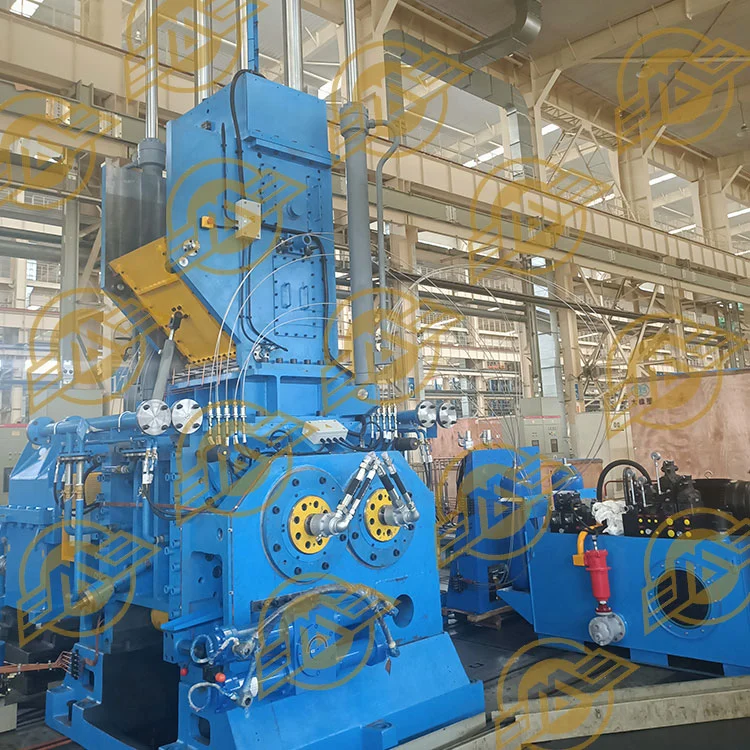How is the intelligent development of Rubber Mixing Machine?
2025-10-17
Table of Contents
-
The Evolution of Rubber Mixing: Entering the Intelligent Era
-
Core Intelligent Features of the Modern Rubber Mixing Machine
-
Technical Specifications at a Glance
-
Tangible Benefits for Your Production Line
-
Frequently Asked Questions (FAQ)
1. The Evolution of Rubber Mixing: Entering the Intelligent Era
The rubber mixing process, long considered a "black art" reliant on operator skill and experience, is undergoing a revolutionary transformation. The traditional internal mixer is being superseded by a new generation of intelligent equipment designed for precision, consistency, and data-driven operation. This shift is not merely about automation; it's about integrating sophisticated control systems that optimize every aspect of the mixing cycle. The intelligent Rubber Mixing Machine represents the pinnacle of this evolution, merging robust mechanical engineering with smart software to deliver unprecedented control over product quality and operational efficiency.
2. Core Intelligent Features of the Modern Rubber Mixing Machine
Today's advanced machinery goes far beyond simple motor control. The intelligence is embedded in several key systems:
-
Adaptive Process Control (APC): The system automatically adjusts rotor speed, ram pressure, and cooling parameters in real-time based on the actual viscosity and temperature of the compound. This ensures each batch meets the exact same specification, regardless of minor variations in raw material properties.
-
Integrated Quality Prediction: Using sensors that monitor torque and energy consumption, the machine can predict key compound properties like Mooney Viscosity and dispersion quality during the mix cycle, rather than waiting for post-production lab tests.
-
Cloud Connectivity & Data Logging: Every batch's data—including cycle time, temperature profiles, energy usage, and operator actions—is securely logged. This data can be accessed via cloud platforms for remote monitoring, historical analysis, and predictive maintenance scheduling.
-
Automated Ingredient Handling: Intelligent systems are often integrated with automated weighing and feeding systems, eliminating manual errors and ensuring precise recipe management.
3. Technical Specifications at a Glance
The following table outlines the standard and intelligent parameters of a high-performance Rubber Mixing Machine.
| Category | Parameter | Standard Specification | Intelligent Feature |
|---|---|---|---|
| Capacity | Chamber Volume | 75L - 270L | N/A |
| Drive System | Main Motor Power | 1600 kW - 4500 kW | Variable Frequency Drive for optimal energy use |
| Control System | User Interface | Basic PLC & HMI | Industrial PC with Touchscreen & Recipe Management |
| Data Management | Batch Record | Manual Logging | Automated SQL Database & Cloud Storage |
| Process Control | Temperature | Fixed Cooling Profiles | Real-time Adaptive Cooling based on Compound Rheology |
| Quality Assurance | End-point Detection | Timer or Fixed Energy | In-line Viscosity & Dispersion Prediction |
| Maintenance | Schedule | Time-based | Condition-based Monitoring & Predictive Alerts |
Key Component List:
-
Rotor Design: Four-wing or six-wing N-type rotors for superior dispersion.
-
Cooling System: Optimized drilled chambers and rotors for maximum heat exchange.
-
Sealing System: Advanced labyrinth seals with automatic grease lubrication.
-
Safety Features: Interlocked discharge door, hydraulic safety guards, and emergency stop systems.
4. Tangible Benefits for Your Production Line
Investing in an intelligent Rubber Mixing Machine translates directly into measurable operational advantages.
-
Unmatched Consistency: Eliminate batch-to-batch variations. Achieve a higher degree of compound uniformity, which leads to better performance in downstream processes like extrusion and calendering.
-
Reduced Operational Costs: Significant savings on raw materials (through precise feeding), lower energy consumption (via optimized cycles), and reduced scrap rates.
-
Enhanced Productivity: Shorter mixing cycles, automated reporting, and reduced dependency on highly skilled operators free up personnel for more value-added tasks.
-
Data-Driven Decision Making: Move from reactive to proactive operations. Use historical batch data to troubleshoot issues, optimize recipes for cost or performance, and provide full traceability for your customers.
5. Frequently Asked Questions (FAQ)
Q1: How does an intelligent Rubber Mixing Machine improve product quality?
It ensures consistent quality by using real-time sensors and adaptive control algorithms to maintain precise parameters throughout the entire mixing cycle. This eliminates the guesswork and variability associated with manual operation, resulting in a compound with uniform dispersion, viscosity, and cure characteristics for every single batch.
Q2: Is the system complex to operate for our existing staff?
While the technology is advanced, the user interface is designed for simplicity. Operators interact with intuitive touchscreen panels with pre-set recipes. Comprehensive training is provided to ensure a smooth transition, empowering your team to leverage the system's capabilities effectively without requiring deep programming knowledge.
Q3: What is the return on investment (ROI) for upgrading to an intelligent mixer?
The ROI is typically realized through multiple channels: a reduction in raw material waste (3-7%), lower energy costs (5-15%), decreased labor costs per batch, and a significant drop in quality-related rejects. Most of our clients report a full return on their investment within 18 to 30 months, depending on production volume.
If you are very interested in Qingdao Maoyuanfeng Industry & Trade's products or have any questions, please feel free to contact us.



